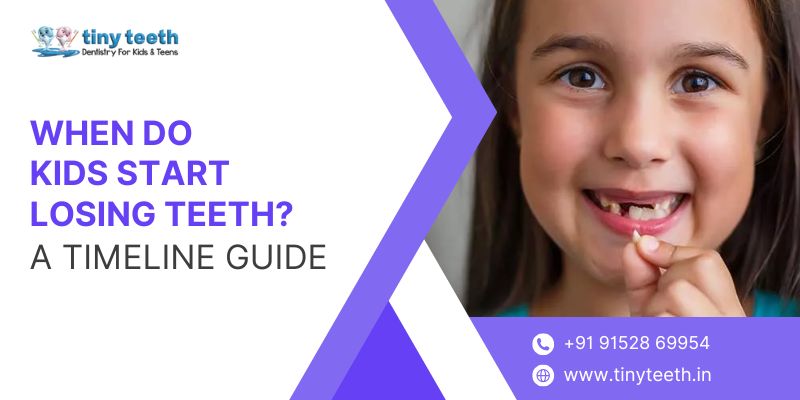Losing baby teeth is an exciting milestone for kids and a rite of passage for parents, but it can also bring up some questions. When do kids start losing teeth? How can you make sure the process goes smoothly? Let’s walk through the timeline together and cover everything you need to know to guide your child through this toothy adventure!
Key Points to Remember:
- Kids usually start losing their baby teeth between ages 6-7.
- The first teeth to fall out are the central incisors, followed by others in a specific order.
- Regular dental checkups are important for keeping kids' teeth healthy and catching any issues early.
The Timeline of Losing Baby Teeth
Typically, kids will lose their first baby tooth around age 6, and all 20 baby teeth will be gone by age 12. It’s a gradual process, and you’ll see them lose teeth in a certain order. Here’s a breakdown of what you can expect:
First Teeth to Go: Central Incisors
The first teeth to fall out are usually the central incisors, which are the two front teeth on the upper and lower jaw. These tend to come out between ages 6-7. While it’s a normal part of growing up, it can be an emotional experience for kids, especially if they’re feeling nervous or uncomfortable. Reassure them that it’s all part of becoming a big kid, and remind them that new, permanent teeth will soon grow in.
Next Up: Lateral Incisors and Primary Molars
After the central incisors, the lateral incisors (the teeth next to the central ones) and the primary molars typically fall out between ages 7-8. By now, your child is probably getting the hang of losing teeth and may even be excited for the next ones to come out. This stage is a great time to remind them of the importance of brushing and flossing to keep their incoming adult teeth healthy.
The Final Stage: Canines and Second Primary Molars
The last baby teeth to go are usually the canines (the pointed teeth next to the incisors) and the second primary molars, which fall out between ages 9-12. Once these teeth are gone, your child will have their full set of permanent adult teeth, which usually happens by age 13. At this point, your child will have 28 permanent teeth, with wisdom teeth (third molars) coming in later, typically from the age of 17.
Recognizing the Signs of Loose Teeth
You’ll want to keep an eye out for loose teeth as your child enters this phase. Signs to look for include wiggling teeth, gaps between teeth, and teeth shifting around. If your child seems to be in pain or if the tooth is taking longer than expected to fall out, a trip to the dentist might be necessary. A dental checkup can help make sure everything is progressing normally.
Preparing Your Child for Their First Tooth Loss
Losing a first tooth is a big deal! To help your child feel more comfortable, explain the process beforehand. Tell them it’s a natural part of growing up, and remind them that the tooth fairy is coming to celebrate the occasion. When the tooth falls out, if there’s bleeding, have your child bite down on some gauze or rinse with water to help control it. If bleeding doesn’t stop, contact your child’s dentist.
Caring for Permanent Teeth
Once your child’s permanent teeth come in, it’s important to focus on good oral hygiene. Here are some tips:
- Brushing: Show your child how to brush properly, use the right technique, and brush for at least two minutes twice daily.
- Flossing: Teaching your child to floss is just as important as brushing. Guide them through the process to ensure their teeth stay clean between visits.
- Dental Checkups: Regular dentist visits, typically every six months, are crucial to keep permanent teeth in tip-top shape.
If you’re searching for an expert kids dentist in Mumbai, look no further than Tiny Teeth. Our expert dentist know how to make dental visits enjoyable and comfortable for children.
